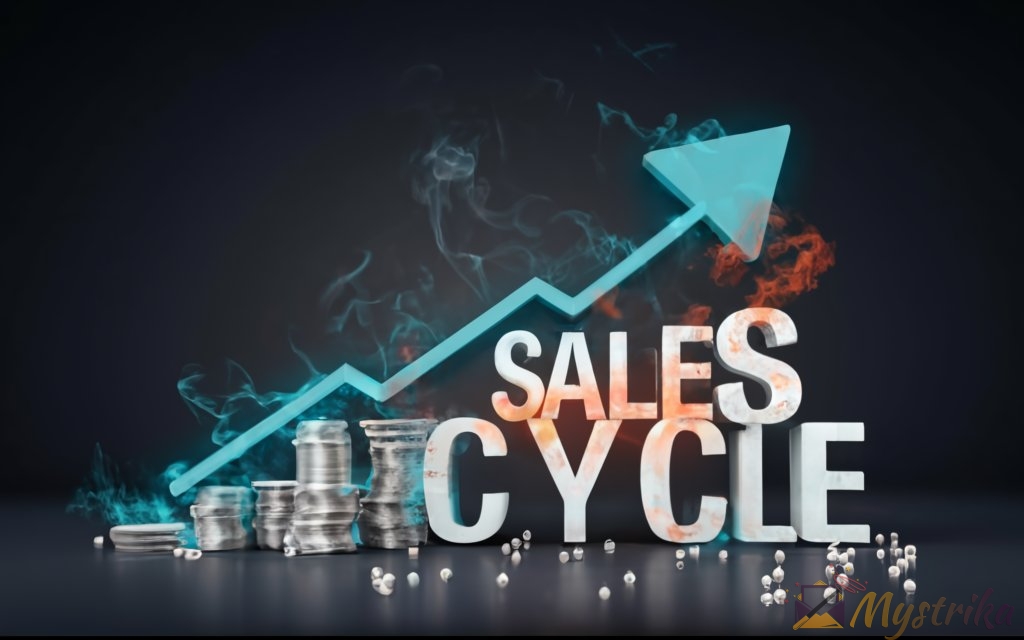Lengthy sales cycles are the bane of every sales rep’s existence. The longer the sales process drags on, the more deals fall through the cracks and revenue targets get missed. In today’s fast-paced, competitive market, having an efficient sales cycle is critical for business growth and profitability. This comprehensive guide will walk you through proven strategies for optimizing your sales workflow to reduce cycle times, improve conversions, and exceed your sales goals. You’ll learn how to align your sales and marketing efforts, implement the right technologies, measure performance through data-driven KPIs, and continually refine your process. With the right focus on your target buyer personas, sales methodology, and team performance management, you can transform a lengthy funnel into a seamless pathway from lead to delighted customer. Follow our data-backed tips to enhance transparency, accelerate deals, and boost customer lifetime value.
Understanding the Stages of the Sales Cycle
Every sale follows a series of steps, from initial awareness of your product to the final loyalty and advocacy from the customer. Understanding this sales cycle is crucial for optimizing your sales process and shortening the time from lead to closed deal. Let’s break down the key stages of the sales cycle and the factors that impact how long it takes.
The 7 Stages of the Sales Cycle
The typical sales cycle includes seven distinct stages:
Awareness
This is when the buyer first becomes aware of your product or service. They may discover you through advertising, word-of-mouth, sales outreach, or digital channels like search and social media. The goal of your marketing efforts should be driving awareness among your ideal customer profiles.
Interest
Now that the buyer knows you exist, you need to capture their interest. This means showcasing how your offering solves their pain points through compelling messaging and content. Develop buyer personas to tailor your messaging to what resonates most with each target customer group.
Consideration
The buyer considers whether your solution is the right fit for their specific needs. They are likely comparing you to alternatives at this stage. Make it easy for prospects to evaluate your product through free trials, demos, and detailed product information.
Evaluation
The prospect is taking a deeper dive into your product and company. Be prepared for questions about pricing, features, implementation, onboarding, support, security, etc. Have sales playbooks, FAQs, and talking points ready to address common concerns.
Decision
The buyer is ready to make a commitment by placing an order and signing a contract. Your goal is to nurture the lead until they are ready to buy. Invest in relationship-building throughout the sales cycle.
Purchase
The customer completes the purchase, whether that is paying an invoice, swiping a credit card, or adding items to a shopping cart. Some sales require ongoing purchases, while others are one-time deals.
Loyalty
Your focus now is on retaining the customer long-term and encouraging referrals. Provide stellar support and look for opportunities to upsell or cross-sell additional products. Loyal, satisfied customers will fuel future sales growth.
Typical Length of the Sales Cycle
The sales cycle duration varies significantly depending on factors like deal size, complexity, and number of decision makers. Some benchmarks by industry:
- Software: 3-6 months
- Manufacturing: 6-12 months
- Financial services: 6-9 months
- Healthcare: 6-18 months
While closing deals quicker is ideal, resist pressure to force prospects through the sales cycle before they are ready. Rushing the process often leads to buyer’s remorse, cancellations, and poor reviews later on.
Factors That Impact the Sales Cycle Length
Many variables influence the time it takes to convert a new lead into a paying customer. Understanding these factors can help you set realistic expectations and identify ways to accelerate your sales cycle where possible.
Product Complexity
The more complex the product, the longer the sales process typically takes. For example, purchasing enterprise software involves much more scrutiny than a self-serve SaaS subscription. With highly complex sales, buyers need time to evaluate capabilities, analyze ROI, and get buy-in from stakeholders.
Deal Size
Larger deal sizes mean higher stakes for the prospect, so they will conduct extensive research before committing. Big-budget purchases often have long sales cycles as buyers take extra caution and need approvals from upper management.
Number of Decision Makers
In B2B sales, multiple people are often involved in the buying decision. The more decision makers that are required to sign off, the more time-consuming the sales process becomes. Carefully map out all stakeholders you need to influence.
Industry Norms
Some industries, like real estate or finance, are known for slow, methodical sales cycles. Other sectors like ecommerce expect swift transactions. Research sales cycle benchmarks for your specific industry.
While you may not control all these external factors, you can optimize your internal sales process and messaging to short the cycle wherever possible. Next let’s explore proven strategies for accelerating deals.
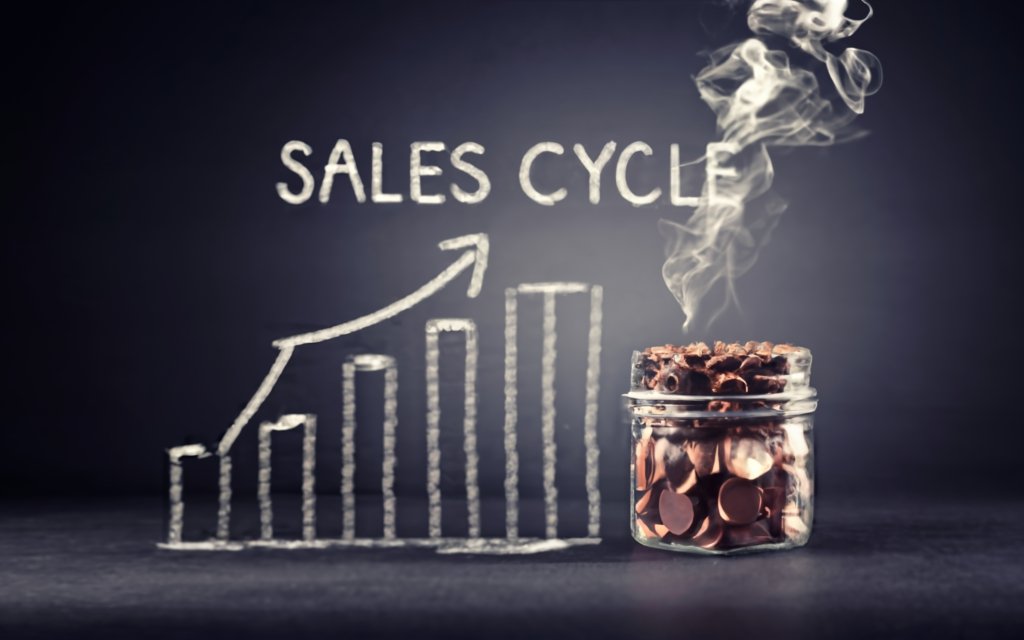
Strategies to Shorten and Optimize Your Sales Cycle
Lengthening sales cycles are a common frustration for sales teams. The longer the process takes, the more deals that slip away and the harder it becomes to hit revenue goals.
While you may not control external factors entirely, you can employ strategies to tighten your sales cycle duration and improve win rates. Here are proven techniques for optimizing the sales process and accelerating your deals.
Identify Your Ideal Customer Profile
First, get crystal clear on your ideal customer and target profiles. Analyze current customers and best-fit leads to identify patterns and common attributes like:
- Industry
- Company size
- Roles and titles
- Pain points
- Purchasing priorities
Document detailed buyer personas that represent your prime prospects. Then focus sales and marketing efforts on reaching more of these high-probability targets.
Spending time with low-potential prospects that are not a great fit will only drag out the sales cycle unnecessarily. Align your outreach, messaging, content, and sales process to resonate with your ideal buyers specifically.
Provide Value Throughout the Sales Process
The modern buyer wants to be educated, not sold to. So take every opportunity to provide value rather than pitch your product. For example:
- Share relevant content resources like ebooks, tip sheets, and blog posts that offer actionable advice.
- Offer free tools or assessments that help prospects evaluate their needs, like a security checklist or ROI calculator.
- Conduct educational webinars and events that teach best practices, not just product capabilities.
This content helps move prospects through the sales funnel by building awareness, credibility, and preference for your brand.
Automate Repetitive Sales Tasks
Sales automation tools speed up tedious administrative work so reps can focus on high-impact selling activities. For instance, use software to automate manual tasks like:
- Data entry of leads and accounts
- Sending follow-up emails
- Scheduling appointments and reminders
- Importing and updating lists
Cranking through repetitive chores manually eats up precious selling time. Technology can eliminate grunt work so reps spend time moving deals forward.
Equip Your Team With the Right Sales Tools
CRM and sales enablement tools can significantly improve sales efficiency. Invest in a technology stack that accelerates your workflow with features like:
- Pipeline and forecast management
- Contact/company data enrichment
- Email and call tracking
- Document sharing and e-signature
- Alerts and notifications
- Mobile access and workflows
Empower your team to sell smarter and faster by equipping them with sales tools optimized to your process.
Implement a Clear and Effective Sales Process
An ambiguous, disjointed sales process hampers productivity. Standardize your proven approach in a clear sales playbook available to all reps. Document things like:
- Steps in your sales workflow
- Criteria for lead qualification
- Guidelines for nurturing and handing off leads
- Battle cards to overcome objections
- Checklists for demos and proposals
- Policies for discounts and approvals
An effective sales playbook distills tribal knowledge so new hires ramp up faster. It also ensures consistency in how your team pursues opportunities.
Use Analytics to Identify Bottlenecks
Dive into your sales data to pinpoint where leakage is occurring in the funnel. Look for patterns around:
- Long delays at specific sales stages
- High fallout rates from leads to close
- Low conversion rates from demos to proposals
- High cycle times from certain lead sources
By quantifying friction points, you can refine processes, adjust strategies, and improve outcomes in those problem areas.
Offer Incentives for Quick Decisions
You have more leverage to nudge deals along once a prospect shows serious buying signals. For example:
- Offer discounted pricing for deciding quickly
- Provide premium support or onboarding for fast sign-offs
- Bundle in additional products or services on condensed timelines
- Set expiration dates for proposals to motivate action
Avoid punishing buyers by taking perks away later. But incentives can effectively encourage buyers ready to move ahead to pull the trigger.
Shortening the sales cycle takes work, but pays huge dividends for hitting revenue targets and keeping the pipeline healthy. Adopting even a few of these approaches can lead to meaningful reductions in deal cycle times over the long-term.
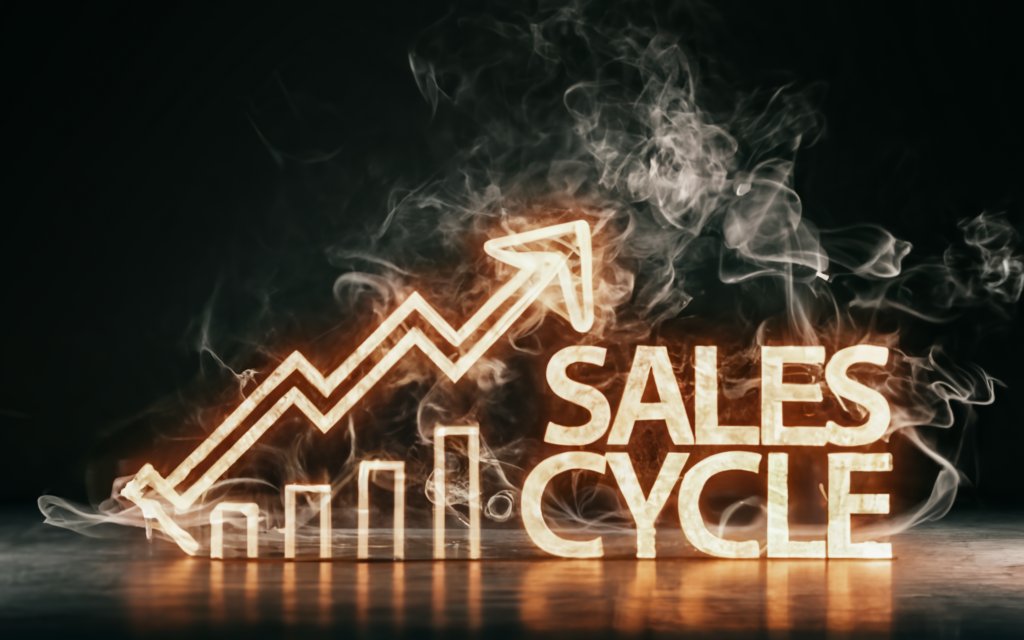
Aligning Your Sales and Marketing Strategies
Sales and marketing alignment is critical for driving growth. But misalignment between the two teams is an age-old frustration at many organizations.
Marketing may complain that sales follows up on unqualified leads. Meanwhile sales gripes about weak lead quality from marketing.
Curing this rift requires structural processes for managing lead flow and buyer nurturing. Here are five tactics to bridge the gap between sales and marketing teams to accelerate your sales cycle.
Define Your Sales Stages in CRM Software
First, sales and marketing must use consistent language to define buying stages from lead to close. Document clear sales stages like:
- Lead (marketing generated)
- Marketing qualified lead
- Sales accepted lead
- Opportunity
- Closed/won deal
Hard coding these stages and stage transition criteria into your CRM ensures alignment. It also enables detailed reporting on conversions through each part of the funnel.
Set Up Lead Scoring Rules
Now build lead scoring rules that route leads automatically once they hit defined thresholds. For example:
- Website visit + form fill = marketing qualified lead
- 2 emails opens + content download = sales accepted lead
Scoring helps identify sales-ready leads for follow up and keeps less mature prospects with marketing for nurturing.
Create a Service Level Agreement for Lead Handoffs
A service level agreement (SLA) between sales and marketing codifies the process for reviewing and accepting leads. It should cover:
- How and when leads are handed off
- Timeframe for sales to accept or reject leads
- Rules for recycling unqualified leads back to marketing
An SLA reduces bottlenecks, ensures lead accountability, and eliminates finger pointing between departments.
Use Marketing Automation to Nurture Leads
Marketing automation helps you track prospect engagement and progress. Set up workflows to:
- Deliver targeted content to leads based on interests
- Send timely follow-up emails when they complete actions
- Score leads and route them to sales at the right time
- Re-engage inactive leads with reminders
This nurturing helps buyers absorb information at their own pace, so they are sales-ready once passed to reps.
Develop Buyer Personas for Targeted Content
Deeply understand your different buyer personas through research. Then tailor content specifically to each ones’ challenges, goals, and priorities.
For example, an ebook for technical roles might focus on product capabilities and ROI. While one for leadership roles covers industry trends and thought leadership.
Targeted, relevant content keeps prospects engaged, fills knowledge gaps, and moves them towards a purchase decision.
Bringing sales and marketing together around well-defined processes, shared goals, and metrics is crucial for sales cycle optimization. These building blocks create alignment that funnels buyers smoothly through the customer journey.
Measuring and Monitoring Your Sales Cycle Performance
They say you can’t manage what you don’t measure. Key performance indicators (KPIs) are essential for monitoring your sales cycle effectiveness and identifying areas for improvement.
Here are the main metrics to track and how to use data to continuously refine the sales process.
Tracking Key Sales Cycle Metrics
Regularly measure and analyze these essential sales cycle KPIs:
Lead Response Time
How long it takes sales reps to respond to and engage new leads. Benchmark your team against metrics like:
- First response within 5 minutes for hot leads
- 100% contacted within 1 hour
- 80% first-touch rates within 24 hours
Faster response times typically lead to higher quality conversations and conversions.
Time in Each Stage
The average number of days leads spend in each defined sales stage. Look for patterns like:
- Longer than usual delays at certain stages
- Spikes or dips in cycle times over time
- Bottlenecks where deals stall
Stage duration reveals inefficiencies to address in your workflow.
Win Rates
The percentage of leads that become closed deals. Calculate by stage for insights like:
- Lead to opportunity conversion rates
- Proposal to close rates
- Demos leading to won deals
High win rates indicate you are qualifying and nurturing leads well.
Sales Velocity
Total sales revenue divided by the number of sales reps. This productivity metric helps track:
- Revenue per rep
- Quota attainment percentages
- Trends over time positive or negative
Rising sales velocity means your process, tools, and team skills are improving.
Benchmarking Against Goals
Compare your KPIs against ideal targets set for each metric. For example:
- 80% demo-to-close rate (goal) vs. 70% actual
- 15% month-over-month revenue increase goal vs. 10% actual
View performance relative to benchmarks to identify gaps.
Monitoring Trends and Changes
Sales leaders should analyze for positive and negative trends. For instance:
- Improving lead follow-up times
- Increasing sales velocities
- Growing proposal-to-close rates quarter over quarter
Metrics heading the right direction indicate sales initiatives are working. While negative trends may signal problems.
Evaluating Your Sales Process
Finally, tie metrics analysis back to assessing effectiveness of your sales process and funnel. Ask questions like:
- What activities are accelerating our cycle times?
- Where are leads falling out of the funnel and why?
- What changes are improving KPIs like velocity?
- How could we optimize underperforming stages?
Use data to guide sales process improvements and prove ROI of initiatives.
With consistent monitoring against goals using key sales cycle metrics, you gain insights to continually refine strategies and boost conversions.
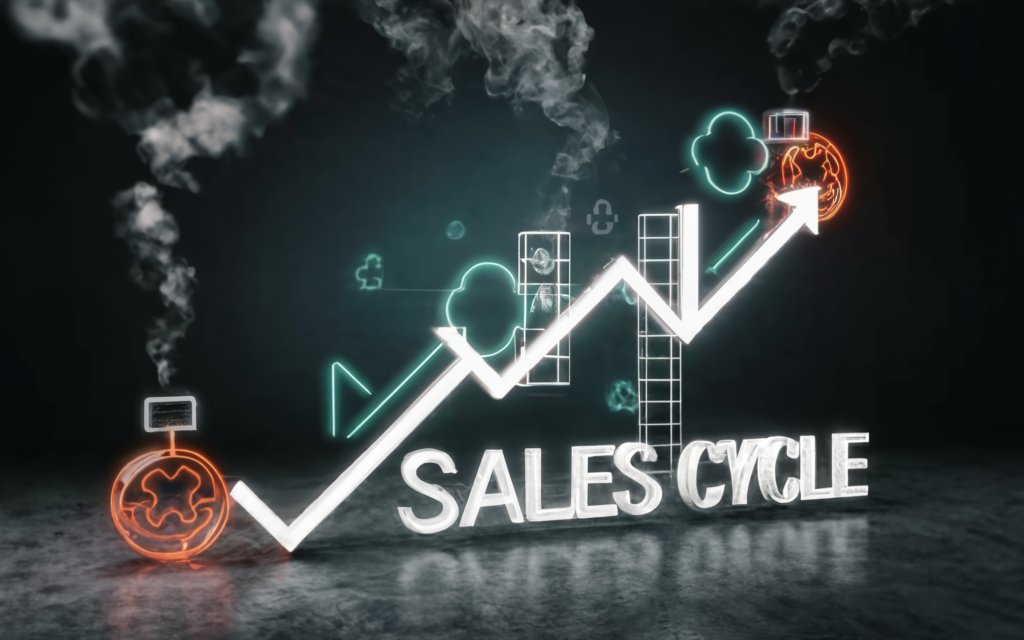
Continuously Optimizing Your Sales Process
Improving sales performance is not a one-and-done effort. Sales leaders must continually optimize their processes, teams, and tools to adapt to market changes.
Building a culture of constant improvement enables you to incrementally shorten sales cycles and boost win rates over time.
Collecting Feedback from Sales Reps
Your sales reps are closest to prospects and their pain points. Solicit their feedback on what’s working well or holding deals back.
Methods to collect reps’ input:
- One-on-one meetings – Have regular 1:1s to discuss ideas and pain points.
- Sales team meetings – Brainstorm as a group during weekly sales meetings.
- Anonymous surveys – Use surveys to gather unfiltered opinions.
- Deal debriefs – Review lost deals for lessons learned.
- Sales CRM notes – Encourage reps to log frustrations and feedback in CRM records.
- Win/loss analysis – Identify common win/loss factors from rep deal reviews.
Equip sales reps to continuously improve their personal processes with peer coaching and mentoring programs.
Seeking Input from Customers
Customers provide valuable real-world feedback on their buying experience with your sales team.
Customer feedback channels:
- Surveys or interviews – Ask for feedback via online surveys or phone interviews.
- Testimonials and reviews – Gather insights from customer testimonials and reviews.
- Customer advisory groups – Solicit input through an advisory council of current customers.
- Sales calls – Discuss potential process improvements on sales calls.
- Account reviews – Get feedback during quarterly business reviews.
- Churn analysis – Understand reasons lost customers cite for churn.
Thank participating customers for their time and input through small incentives.
Testing New Strategies and Tools
Try new concepts on a small scale to see what moves the revenue needle before rolling out company-wide.
Examples of sales experiments:</strong>
- Test new automation tools with a pilot sales team before full deployment.
- Run A/B tests on email sequences or outreach cadences and monitor results.
- Trial new sales incentives or discount programs with select accounts.
- Add sales staff or expand territories to evaluate increasing capacity.
- Sample new sales technologies with reps before broader purchasing.
Analyze results of tests and double down on what delivers the best outcomes.
Conducting Regular Performance Reviews
Make optimizing the sales process part of everyone’s responsibilities through reviews and goal-setting.
Review best practices:
- Set regular 30/60/90 day reviews between managers and reps.
- Compare rep performance metrics to benchmarks.
- Provide ongoing coaching and training as needed.
- Collaborate on goals and plans to build on strengths.
- Document improvements reps will focus on next review period.
Consistent reviews reinforce sales process consistency while allowing customization for each rep’s needs.
Investing in Ongoing Sales Training
Finally, provide continual sales education to keep skills sharp in an ever-changing selling environment.
Sales training ideas:
- Hold regular refresher courses on your sales methodology, tools, and case studies.
- Sponsor sales reps to attend online or live industry training workshops.
- Train reps on new technologies and integrate into the sales process.
- Offer one-on-one expert coaching for reps who need help improving.
- Send monthly tips focused on relevant selling topics like social selling.
- Share peer best practices during sales meetings.
World-class sales teams never stop improving. By treating sales optimization as a continuous process, you’ll achieve incremental gains over time.
Final Tips for Sales Cycle Success
Optimizing your sales cycle takes work, but the long-term payoff is worth the effort for hitting your revenue goals. Here are some final tips for improving sales processes, shortening deal cycles, and boosting win rates.
Define Your Target Buyer Personas
Get crystal clear on the ideal buyer profiles that are most likely to purchase from you. Build detailed personas that capture attributes like:
- Job title and role
- Industry and company size
- Location
- Common pain points
- Purchasing influencers and decision-making process
- Objectives they want to achieve
Document personas for each of your target segments and tailor your sales process and messaging to align with their needs.
Equip Your Sales Team for Success
Hire sales reps that align with your ideal culture and have the attributes to execute your sales process. Look for skills like:
- Persistence paired with patience during long sales cycles
- Ability to build strong relationships
- Innovative problem-solving skills
- Technical aptitude to learn new sales technologies
- Excellent communication and presentation abilities
Then train reps thoroughly on your sales methodology, demo best practices, and objections handling. Set clear expectations around sales metrics and activities.
Set Clear Policies and Processes
Document your sales process in a playbook available to all reps. Outline your guidelines for:
- Qualifying and nurturing leads
- Handling cold calls, emails, and demos
- Creating proposals and pricing models
- Managing opportunities and forecasts in your CRM
- Conducting account business reviews
- Seeking approvals for discounts or other exceptions
Consistent sales processes improve efficiencies and results. But allow flexibility to adapt steps as needed for different scenarios.
Leverage Technology to Enhance Efficiency
Equip reps with sales enablement tools to speed up previously manual tasks. Examples include:
- CRM to track leads and opportunities
- Marketing automation to nurture prospects
- AI tools to analyze interactions and recommend next steps
- Content portals to share collateral
- Data enrichment to identify prospect needs
- Proposal software to speed quote generation
Powerful technology stacks help sales teams sell smarter and faster.
Focus on Providing Value, Not Pitching
Modern buyers are self-educating online. So take every chance to provide value, not pitch products. For instance:
- Publish blog posts, guides, and videos that offer helpful tips.
- Host educational webinars and events on best practices.
- Share relevant studies, statistics, and success stories.
- Provide ROI calculators, templates, assessments, and other tools.
- Recommend solutions to problems without overt selling.
Valuable content builds trust and credibility. Nurtured leads are sales-ready once reps speak to them.
The sales cycle journey is unpredictable, but you can implement strategies to keep it moving smoothly towards more closed deals. With buyer empathy, process consistency, smart technology, and continual optimization your sales team will maximize results.
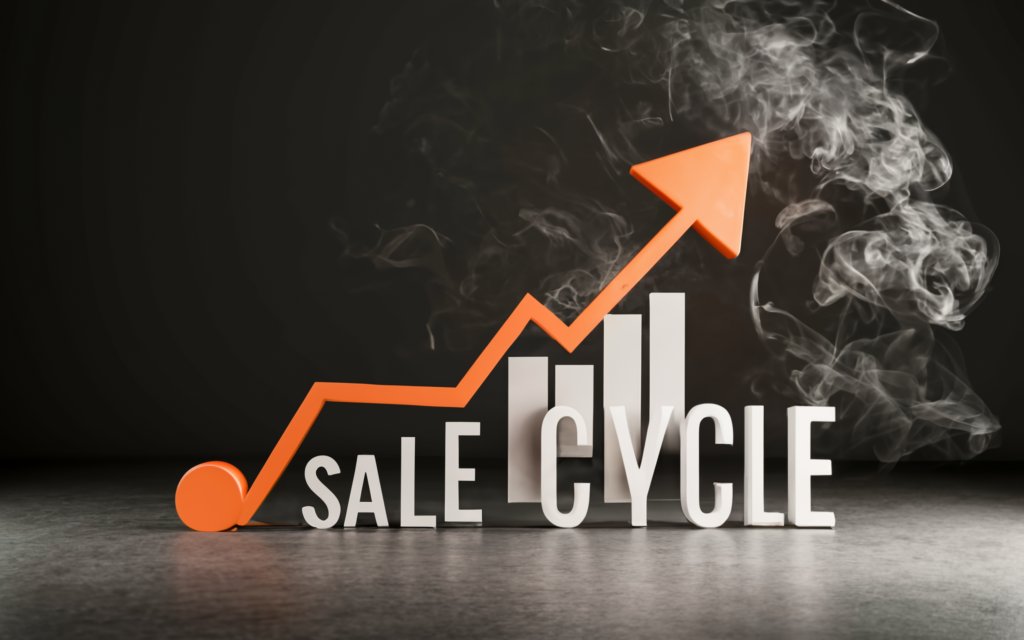
Key Takeaways
Optimizing your sales cycle to increase conversion rates and reduce the time from lead to close involves every aspect of your sales strategy and processes. Here are the key takeaways:
- Understand the complete sales journey your prospects experience, from initial awareness to loyal customer advocacy. Map content and messaging to each stage.
- Identify the ideal buyer personas you want to target. Clarify their attributes and tailor your sales process for their specific needs.
- Provide consistent value focused on the buyer’s needs throughout the sales cycle, not just promoting your product. Share guides, tools, and education.
- Implement automation and sales enablement technology to increase efficiency for repetitive sales tasks, allowing reps to focus on selling.
- Create a standardized sales process documented in a playbook shared across your sales team.
- Align sales and marketing teams through defined lead definitions, handoff criteria, SLAs, and buyer nurturing.
- Regularly analyze key sales metrics like lead response times, sales cycle stage durations, win rates, and deal velocity.
- Continuously test new strategies and tools on a small scale, making data-driven decisions on what works.
- Solicit feedback from sales reps, customers, and the broader market to guide ongoing optimizations of your process.
- Provide ongoing sales skills training and coaching to keep reps sharp as the competitive landscape evolves.
With both overarching sales strategies and day-to-day tactical execution aligned to shorten your funnel and enhance conversions, your team will deliver sales cycle excellence.
Frequently Asked Questions
Q: How long should the typical sales cycle be?
A: There is no universal ideal sales cycle length. It depends on factors like your product complexity, deal sizes, industry norms, and number of decision makers involved. Focus on finding the shortest cycle that allows buyers to adequately evaluate your solution.
Q: When should I follow up with new leads?
A: Strive to respond to new leads immediately, if possible within 5 minutes for hot leads and always within 24 hours. Quick follow-up speeds sales cycles by capitalizing on initial interest.
Q: How many touchpoints are needed to convert a lead?
A: One study found it takes an average of 12 meaningful touchpoints to convert a lead. Use a mix of emails, calls, social contacts, and nurturing campaigns.
Q: What’s more important, speed or deal size?
A: You need a balance. Pushing unqualified prospects too quickly leads to low conversion rates and customer churn. But excessive delays also increase fallout. Optimize for just the right pace.
Q: What types of incentives shorten sales cycles?
A: Discounts for faster decisions, premium services for early adopters, free gifts for quick sign-offs, and expiration dates on proposals can nudge buyers along.
Q: How can I calculate my sales cycle performance?
A: Track key metrics like lead response times, stage durations, win rates, deal velocity, and quota attainment. Analyze trends and benchmark against goals.
Q: What do I do if my sales cycle is too long?
A: Review your sales process end-to-end and collect feedback on bottlenecks. Refine lead nurturing and handoffs. Eliminate inefficiencies. Enhance rep skills with training.
Q: How do I align sales and marketing?
A: Use consistent lead definitions and handoff processes. Score leads based on buyer actions. Document SLAs for each department. Share goals and data.
Q: What’s the best way to shorten the sales cycle?
A: There is no silver bullet. Take a full funnel view and chip away at incremental improvements through process optimization, technology, and team selling skills.

